- ENDEES
- UiU - Home
- Art Destination Jordan
- AD Jordan
- HIGHLIGHTS
- THEMES
- ITINERARIES
- Travel tips & information
- Free Newsletter
- UiU - Sections
- Free Newsletter
For an optimal view of our website, please rotate your tablet horizontally.
The Sanctuary of Saint Lot at Deir ‘Ain ‘Abata (monastery at the Abata spring in Arabic), is a monastic complex built around a natural cave where early Christians believed that Abraham's nephew Lot and his daughters found refuge after the destruction of Sodom and Gomorrah. Popularly known as “Lot’s Cave,” the sanctuary is one of the most important Byzantine sites in Jordan.
According to the Old Testament, the cities of Sodom and Gomorrah near the Dead Sea were places where people lived a godless and vicious life. God decided to destroy them with a rain of fire and brimstone. But before, he saved Abraham’s nephew, the righteous Lot and his family. As they were leaving the burning city of Sodom, Lot’s wife disobeyed God’s order not to look back and was therefore turned into a pillar of salt (Genesis 19:26). Lot and his two daughters found refuge in a cave on a hillside near the small town of Zoara – a place depicted on the famous mosaic floor map at Madaba from the 6th century AD.
During archaeological surveys carried out at the southeast end of the Dead Sea in 1986, the location of Lot's Cave could be identified with the ruins of a religious site on a steep hill overlooking the modern town of as-Safi (former biblical Zoara). It was excavated and restored by Dr Konstantinos D. Politis and his team, who also advocated for the establishing of the adjacent Museum at the Lowest Place on Earth, where several excavations findings are displayed.
The Sanctuary of Agios ("Saint" in Greek) Lot consists of a Byzantine monastic complex, built between the 5th and 7th cent. AD around a natural cave. The triple-apsed basilical church has mosaic floor pavements with Greek inscriptions, dated to April 606 AD and May 691 AD. They are partially covered for protection, or where removed and are on display at the Museum. To the south is a large reservoir, and to the north, a refectory with an oven, a pilgrim’s hostel and a communal burial chamber.
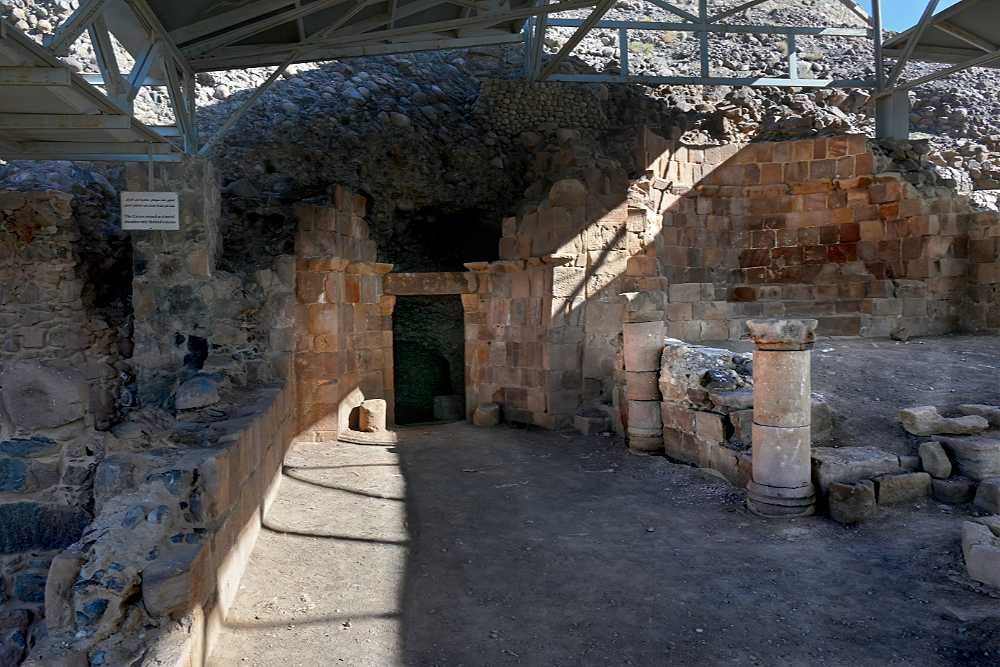
North aisle of the church leading to Lot’s Cave
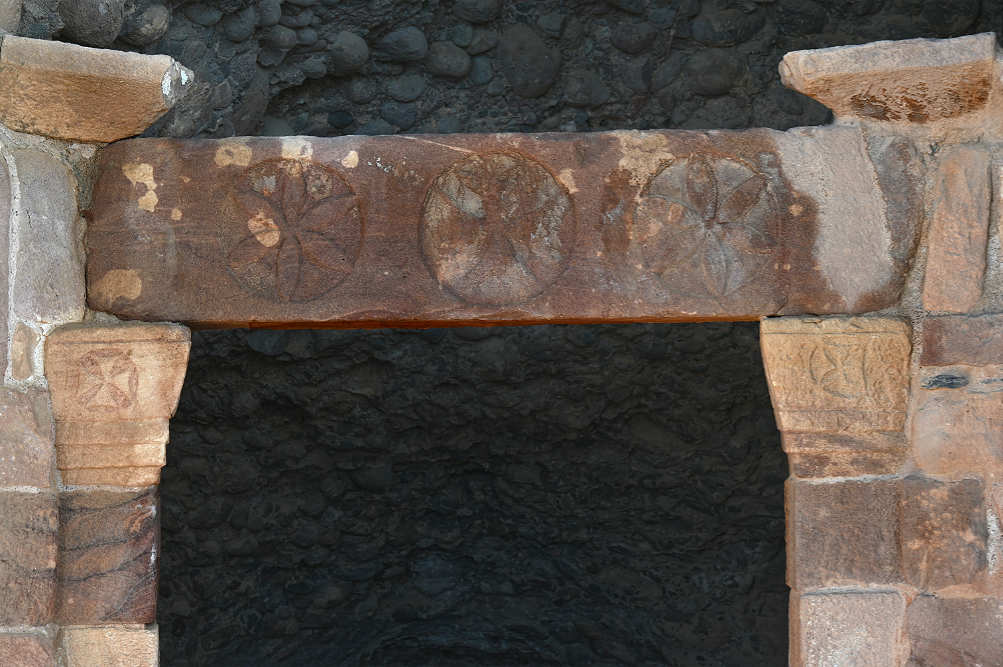
The cave's doorway
The sandstone pilaster capitals on either side of the cave's entrance are carved with Maltese-type crosses with traces of red paint. The lintel has a similar cross in the center flanked by two rosettes.
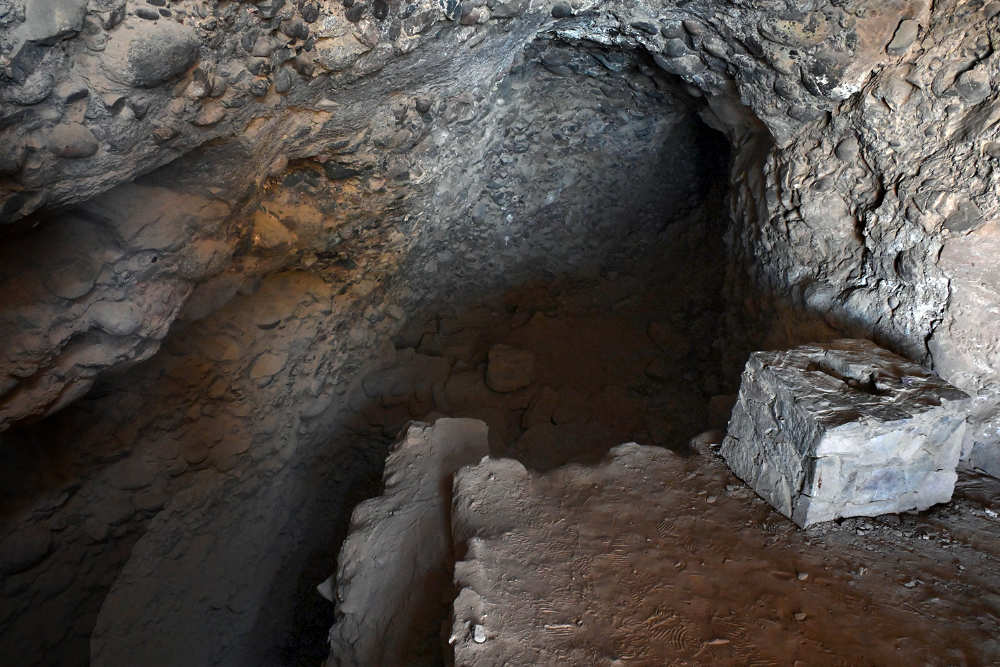
Lot's Cave
The cave which the early Byzantine Christians believed was the place where Lot and his daughters took refuge, is the focal point of the entire monastic complex. Excavations inside the cave revealed a series of steps leading into a very small room measuring 200 x 250 cm, paved with white marble slabs.
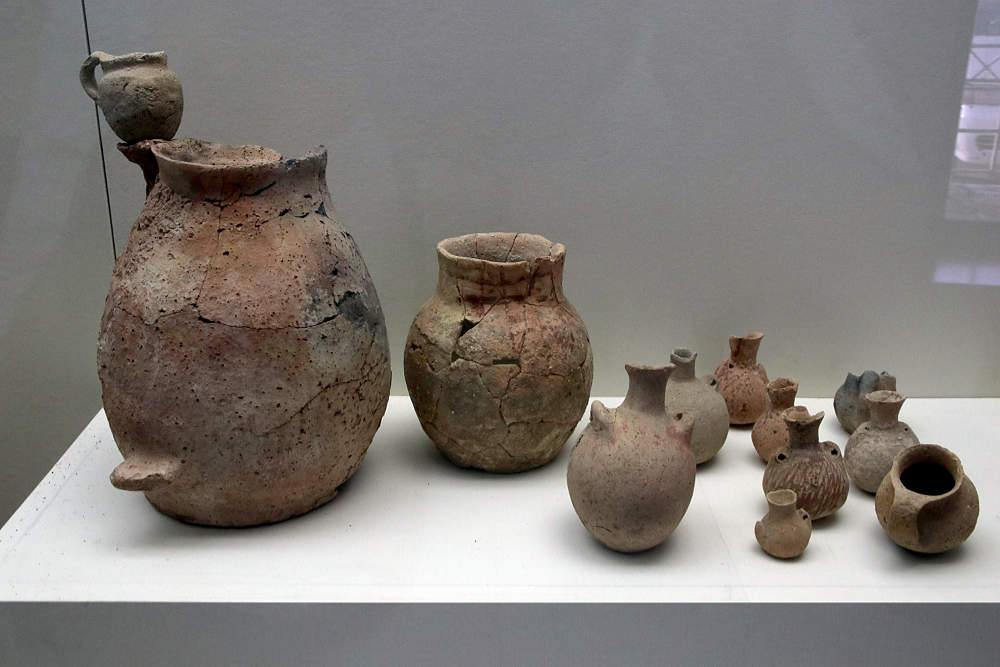
Bronze Age pottery vessels (3rd millennium BC)
Found in the lowest levels of Lot's Cave, they proof that it has a long history of occupation. Some of these pots must have been seen at the site by early Christians who would have associated them with the Old Testament story of Lot and therefore considered them holy. On display at the Museum at the Lowest Place on Earth.
In the Quran, Lot is known as the prophet Lut. Arabic graffiti on the church walls and on pottery from the late 7th - 8th century AD indicates that the site was worshiped during the Islamic period as well by Christians and Muslims alike. The Sanctuary of Saint Lot at Deir ‘Ain ‘Abata was proclaimed a holy maqam (site of Islam) by H.M. the late King Hussein in 1995, and was consequently placed under the protection of both the Ministry of Religion and the Ministry of Tourism and Antiquities.
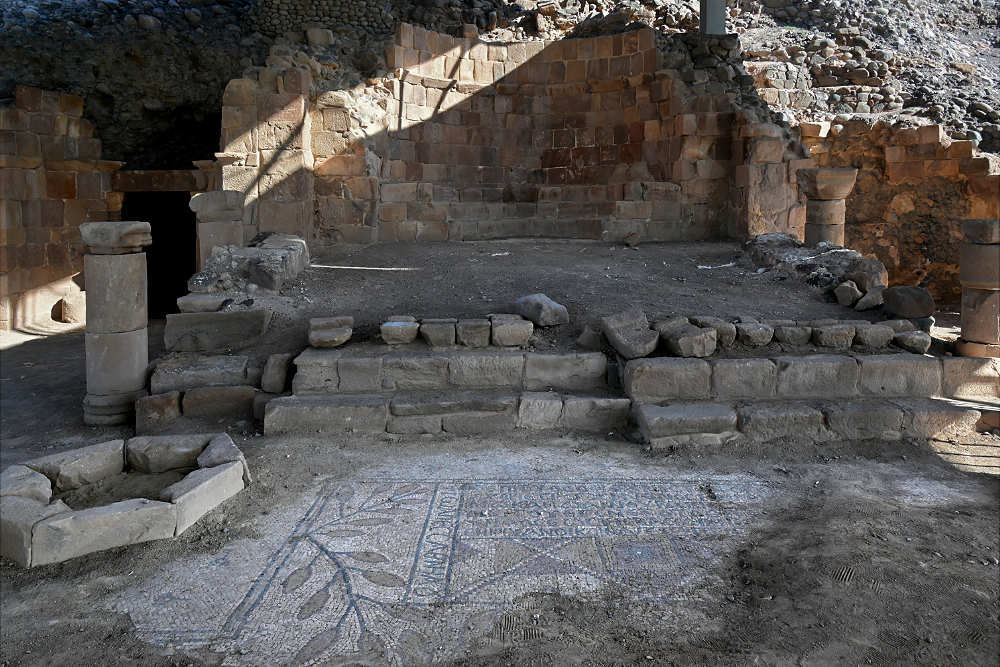
Central nave and chancel
The basilica was found particularly well preserved to a height above the cornice where the vaulted roof began. The nature of the remains led the excavators conclude that it was peacefully abandoned and did not suffer destruction either by earthquakes or invaders.
The altar zone or chancel is elevated from the rest of the central nave and was separated by screen plates made of imported white marble. On the wall of the apse is a three-stage synthronon (semicircular priest's bench.) The chancel's mosaic (covered by sand for protection), dated to A.D. 605 is decorated with typical early Christian/Byzantine motifs such as birds, a lamb and a peacock, all surrounded by grape vines. In the center, is a stylized chalice and below it an encircled cross inscribed with the Greek words TELOS KALON, which means "Good End."
The central nave's mosaic (described below) is partially shown today to the visitors. Left of it can be seen remnants of the heptagonal ambo, or pulpit.
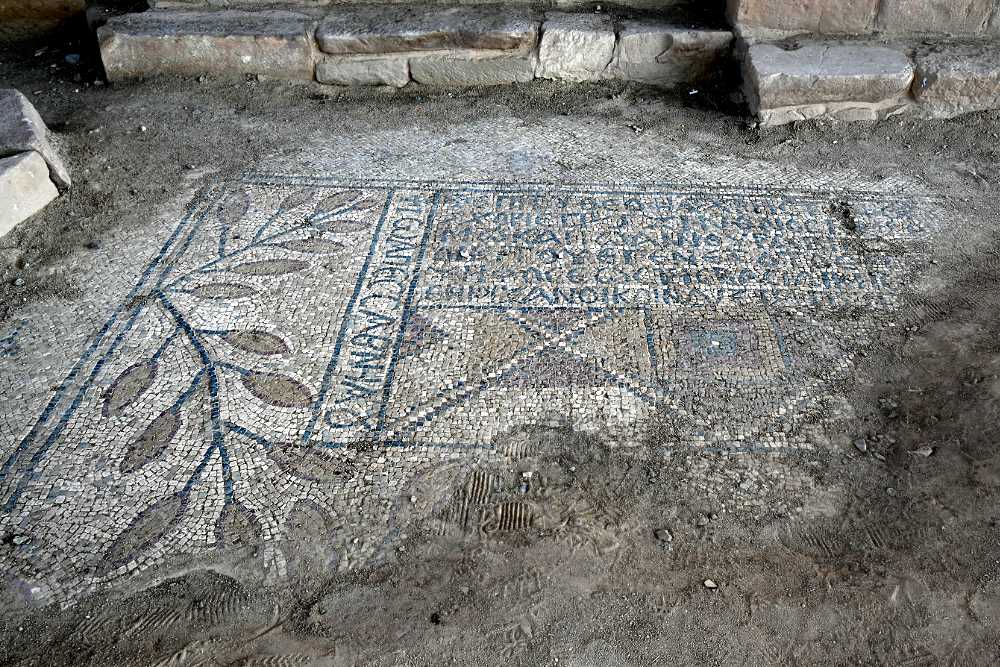
Mosaic pavement in the nave
It has a six-line Greek inscription which names the clerics, governor, and probably the mosaicist (Iannis son of Sabinaou). It also describes the site as "Agios Topos," a Holy Place, which suggests a biblical episode, and the church as a basilica, which means that it was large enough to accommodate pilgrims. The date of the mosaic (691 AD) is significant as well, since it is already during the period of Umayyad Islamic rule (636-750 AD.)
These observations by the excavator Dr Konstantinos D. Politis also draw special attention to the floral designs around the inscription: "Its long sprawling branches tipped with large orange-coloured leaves are reminiscent of the painted decorations on Nabataean fine ware pottery. Indeed, this motif may mark a continuity of Nabataean art styles emanating from Petra that lasted well into the early Islamic period." Nabataean pottery sherds from 1st cent. BC - 1st cent. AD where found on site.
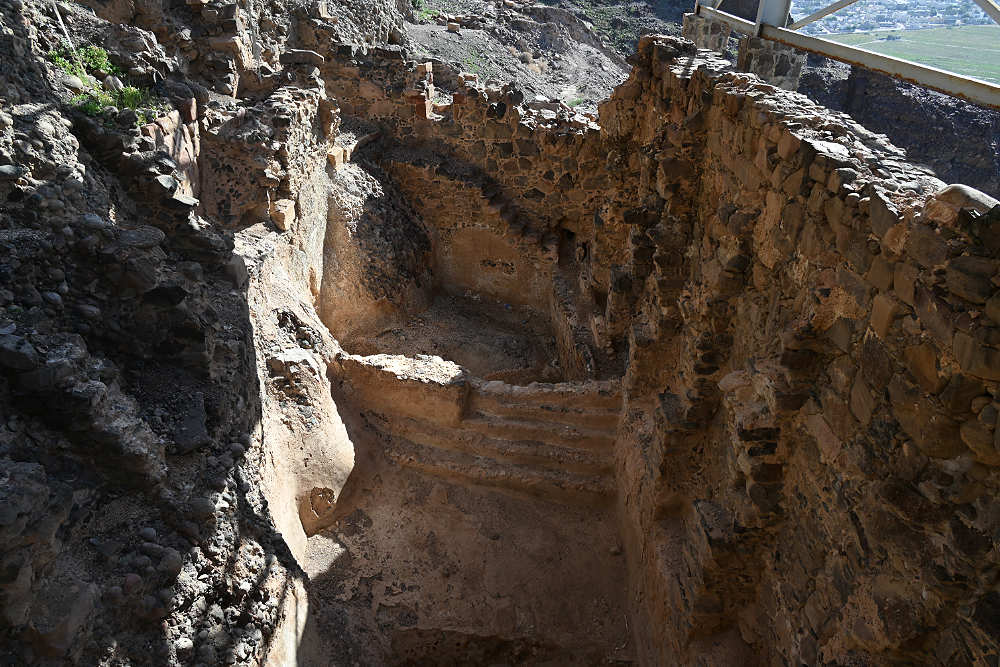
The large cistern
To the south of the church, there is seven meter deep, arched reservoir, which was covered by palm trunks and fed by a complex water catchment system, with settling tanks and internal conduits. The structure is comparatively very large which indicates that Lot's Sanctuary once attracted numerous pilgrims.
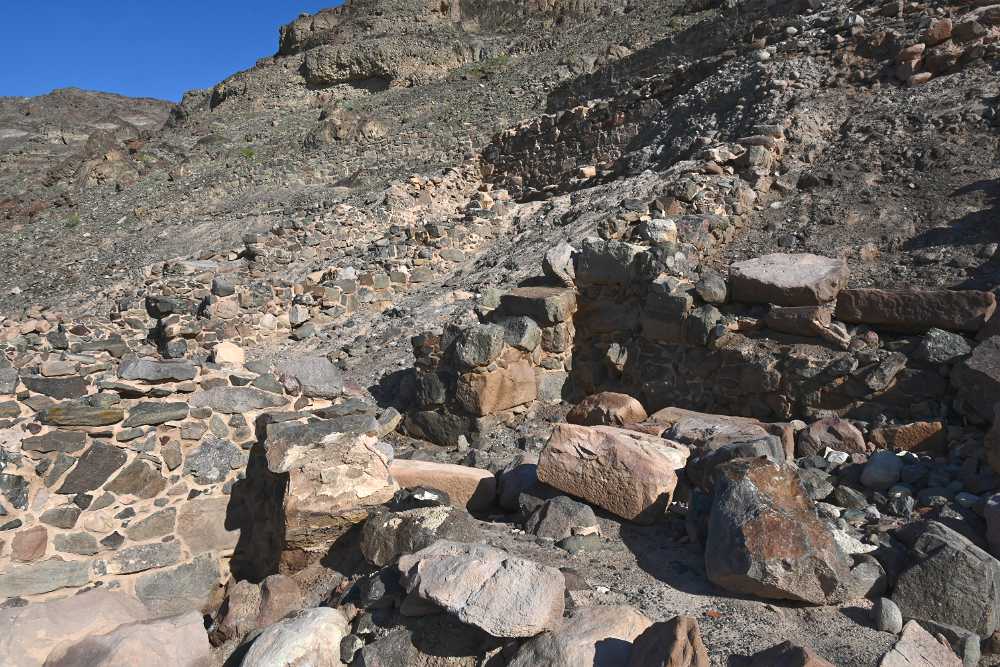
View north in direction of the refectory (dining room), kitchen, and pilgrim's hostel.
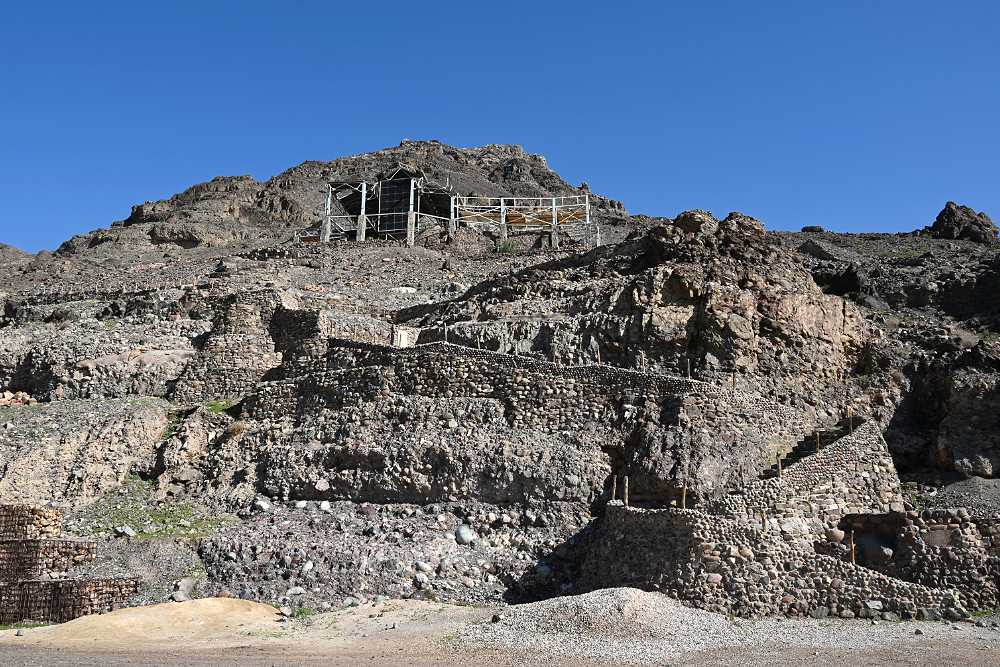
A gravel road from the Museum at the Lowest Place on Earth leading up to the site and a stone-paved stairway to the church facilitates access. The church has been conserved and provided with a shelter.
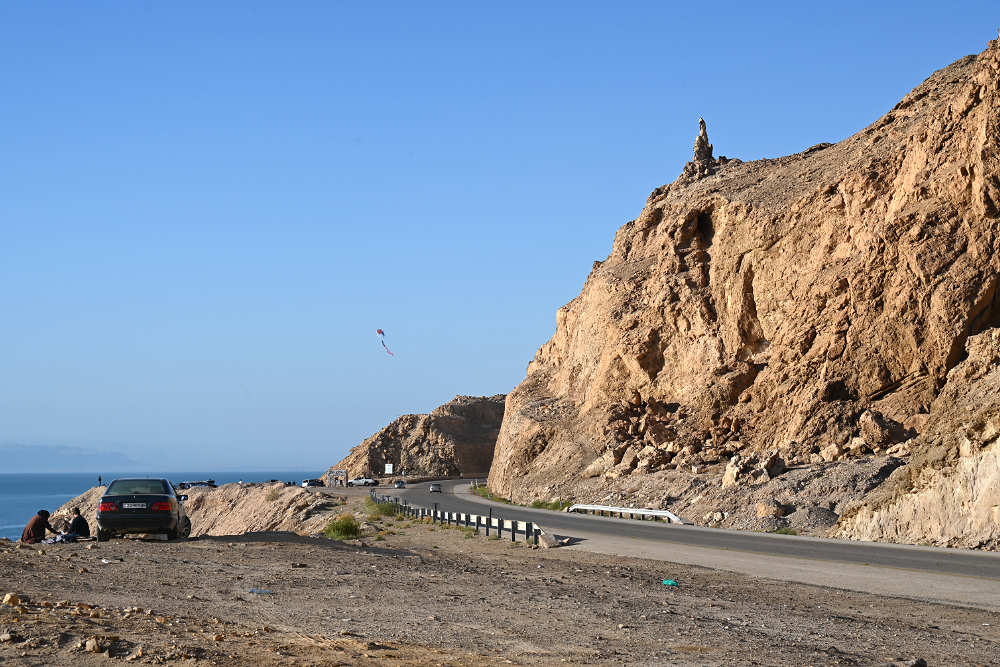
Statue of the Wife of Prophet Lot
A rock formation overlooking the highway and Dead Sea, close to the Wadi Mujib entrance, is said to be the remains of the salt pillar that was Lot’s wife. "However, as they were leaving the burning city of Sodom, Lot’s wife disobeyed God’s order not to look back and was turned into a pillar of salt." (Genesis 19:26).
© Text and photos: Universes in Universe.
Source, among others:
Konstantinos D. Politis: The Monastery of Aghios Lot at Deir ‘Ain ‘Abata In Jordan. In: Byzanz – das Römerreich im Mittelalter Teil 2, 1 Schauplätze, Falko Daim · Jörg Drauschke (Editors), Verlag des Römisch-Germanischen Zentralmuseums, 2010.
The Sanctuary of Agios Lot, At Deir 'Ain 'Abata, UNESCO Tentative Lists, Date of Submission: 18/06/2001.
Lot's Cave
From the Museum at the Lowest Place on Earth, you can get up to the sanctuary via a gravel road and stairs.
Approx. 130 km from Amman; 200 km from Aqaba; 120 km from Petra
© Texts and photos are protected by copyright.
Compilation of information, editing, translations, photos: Universes in Universe, unless otherwise indicated